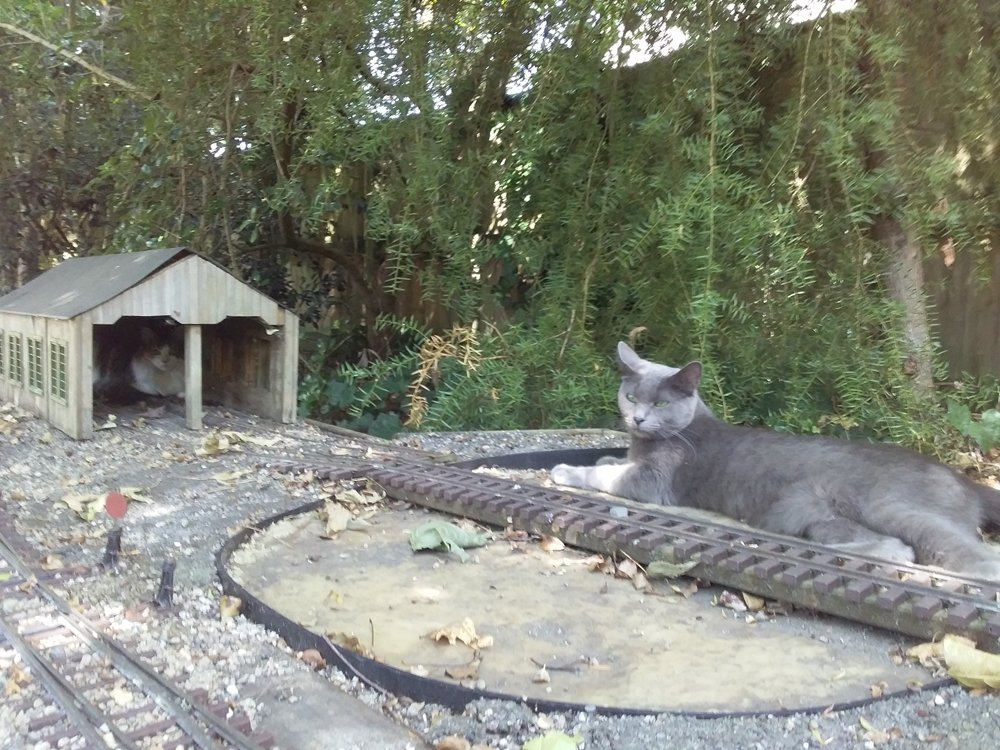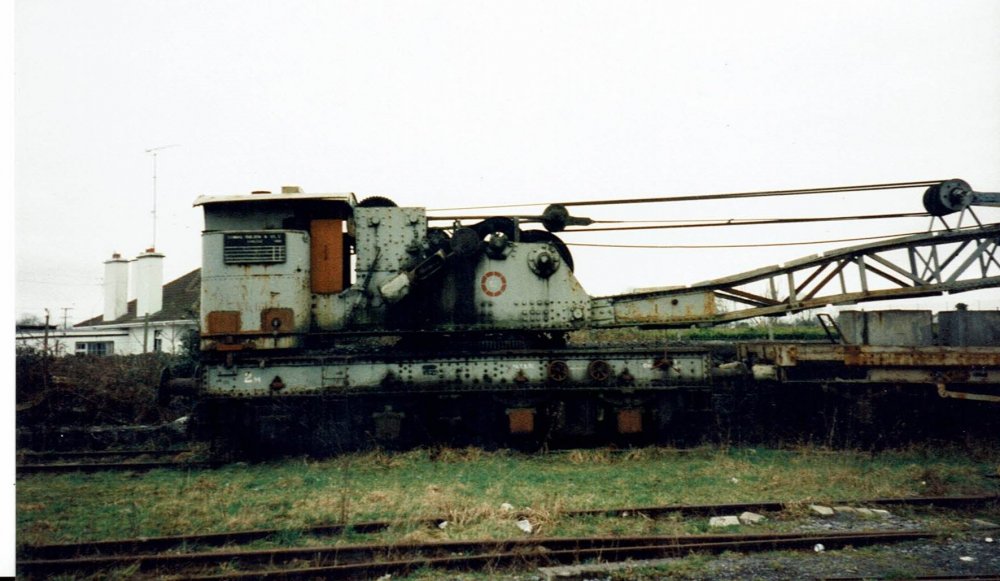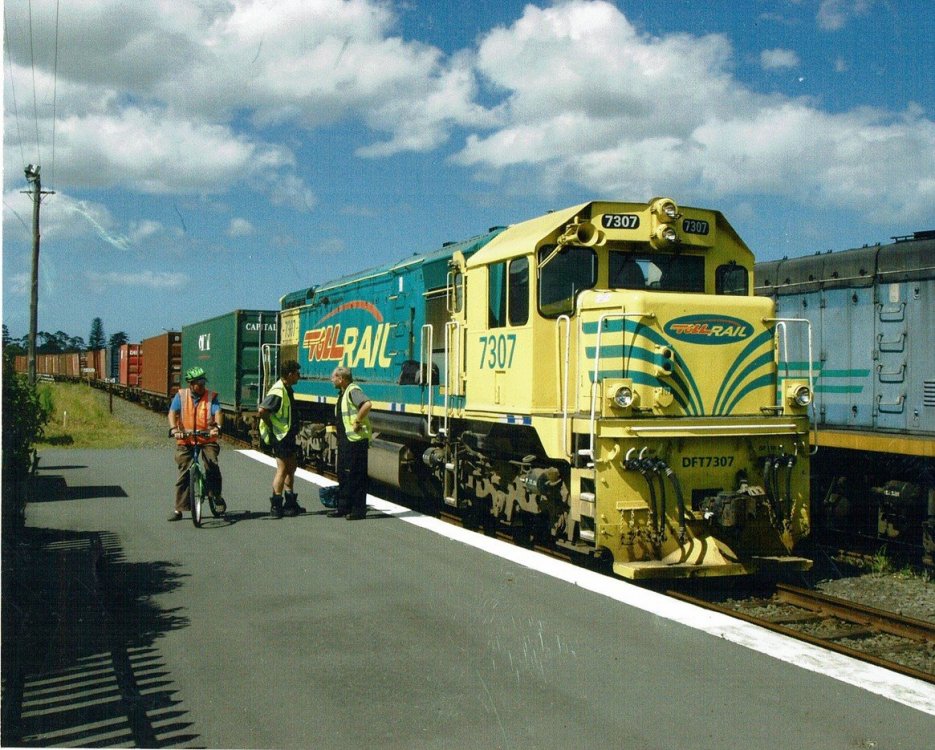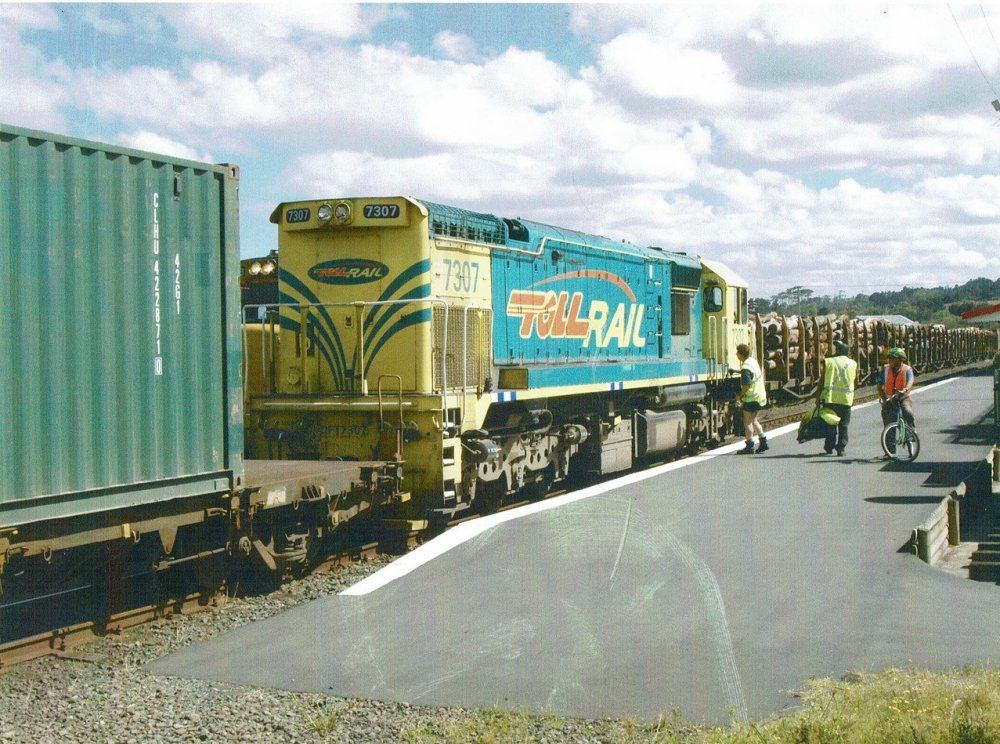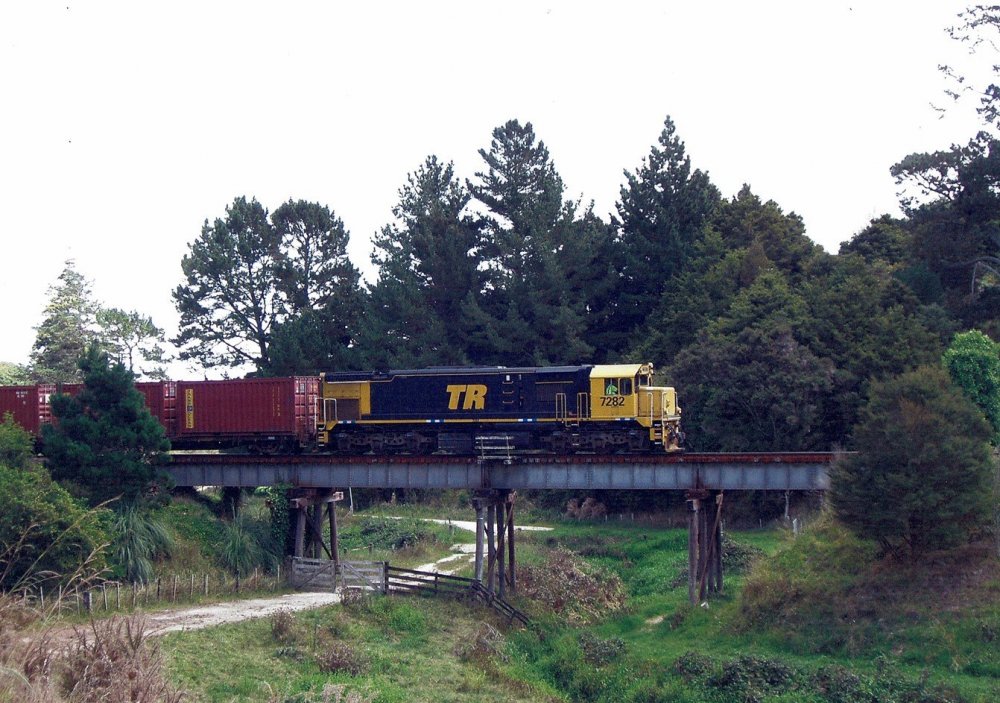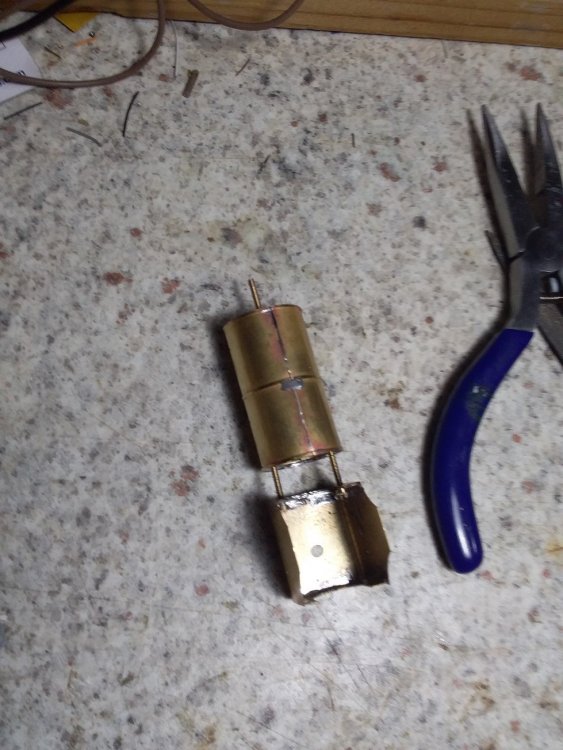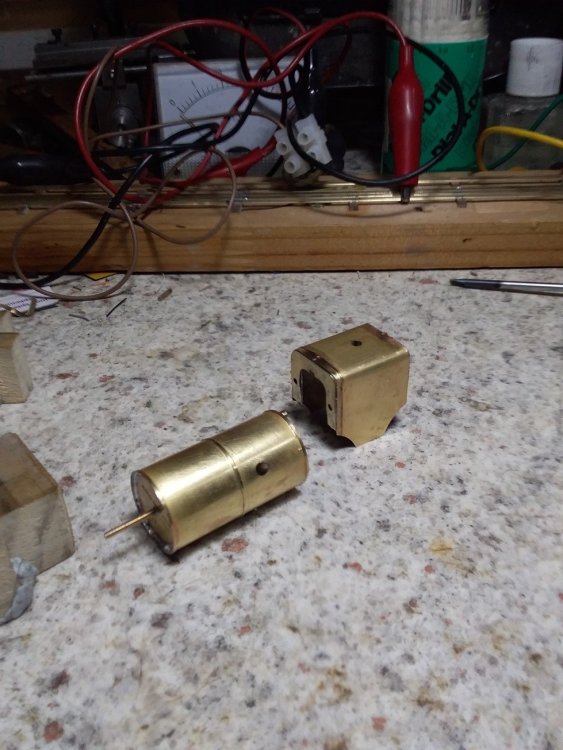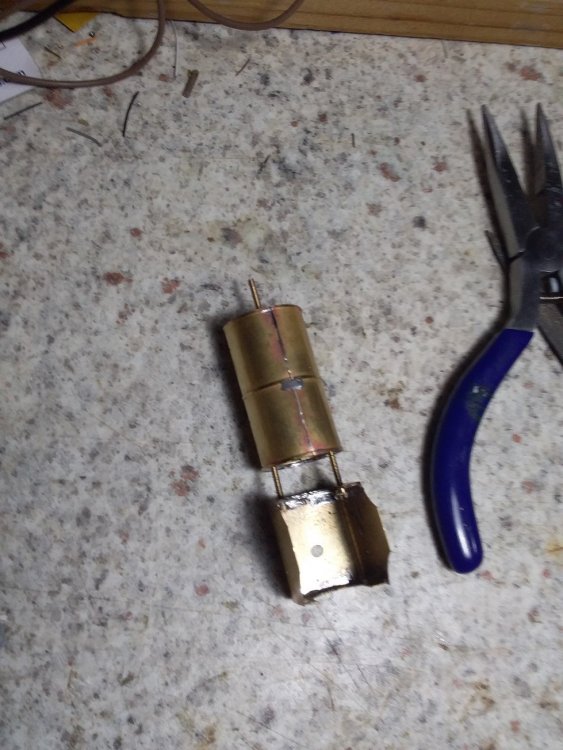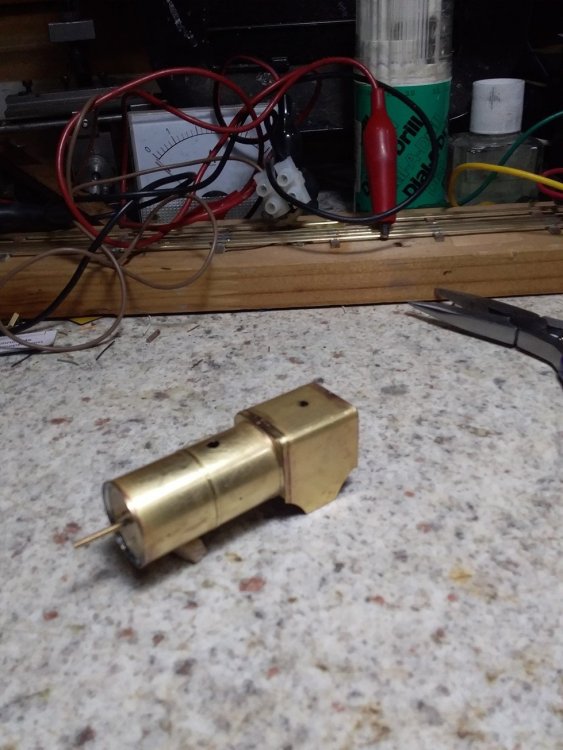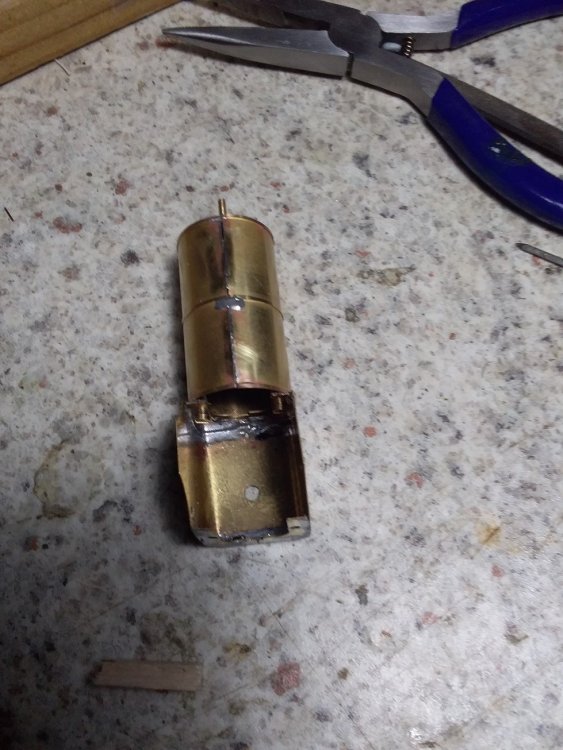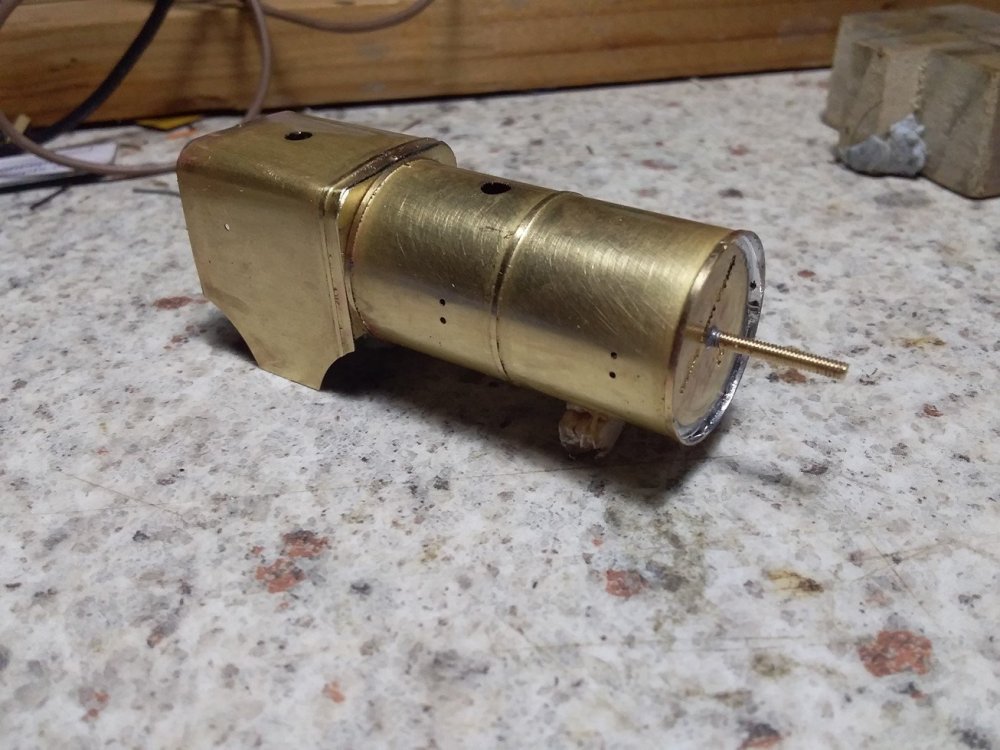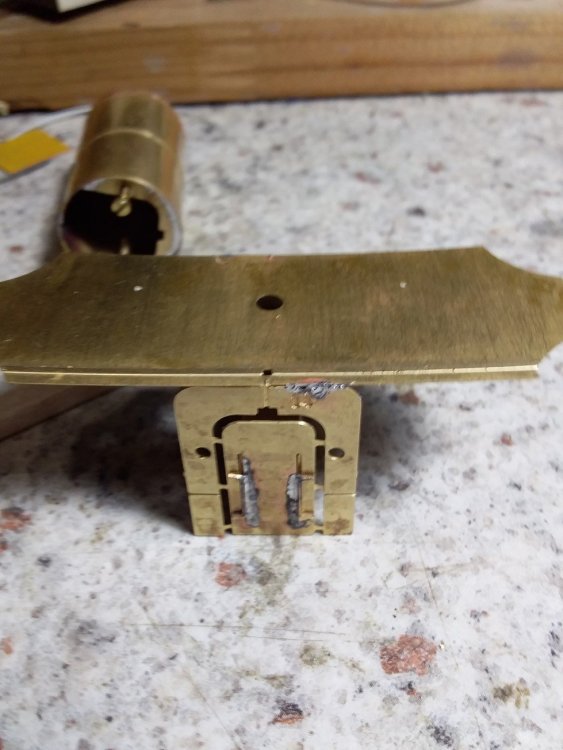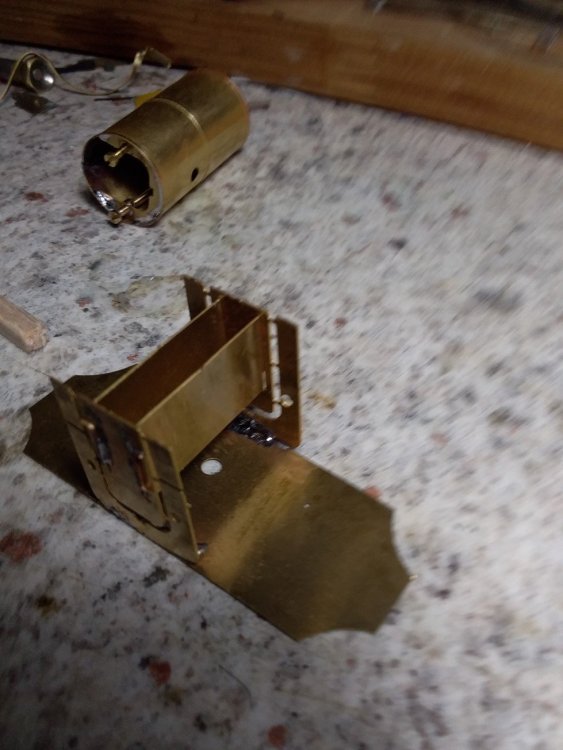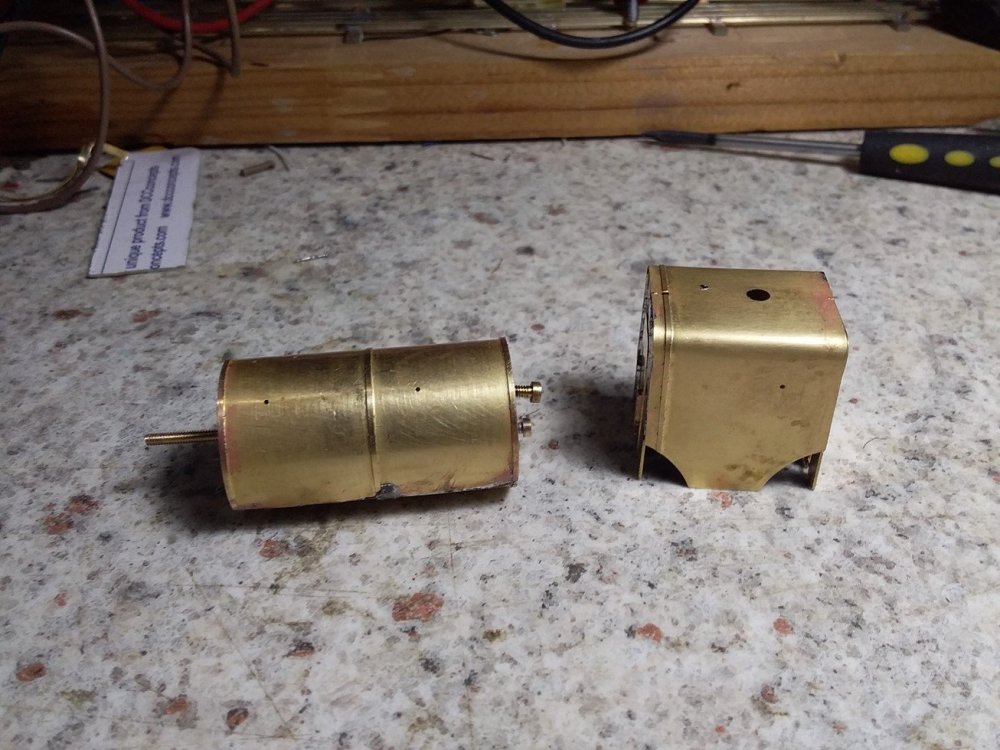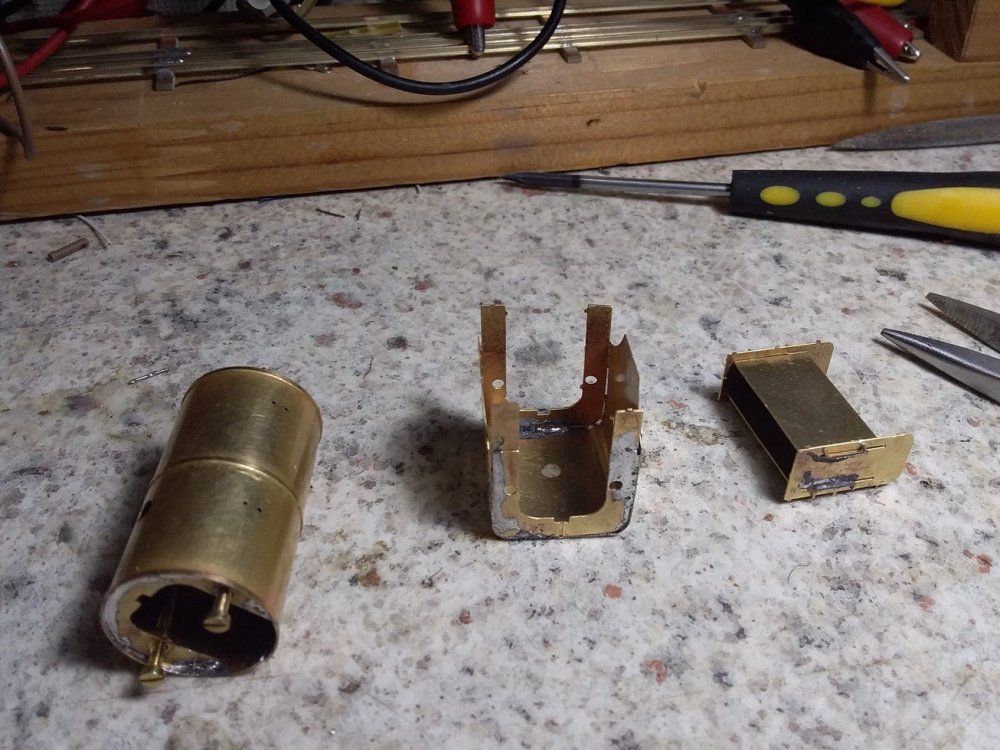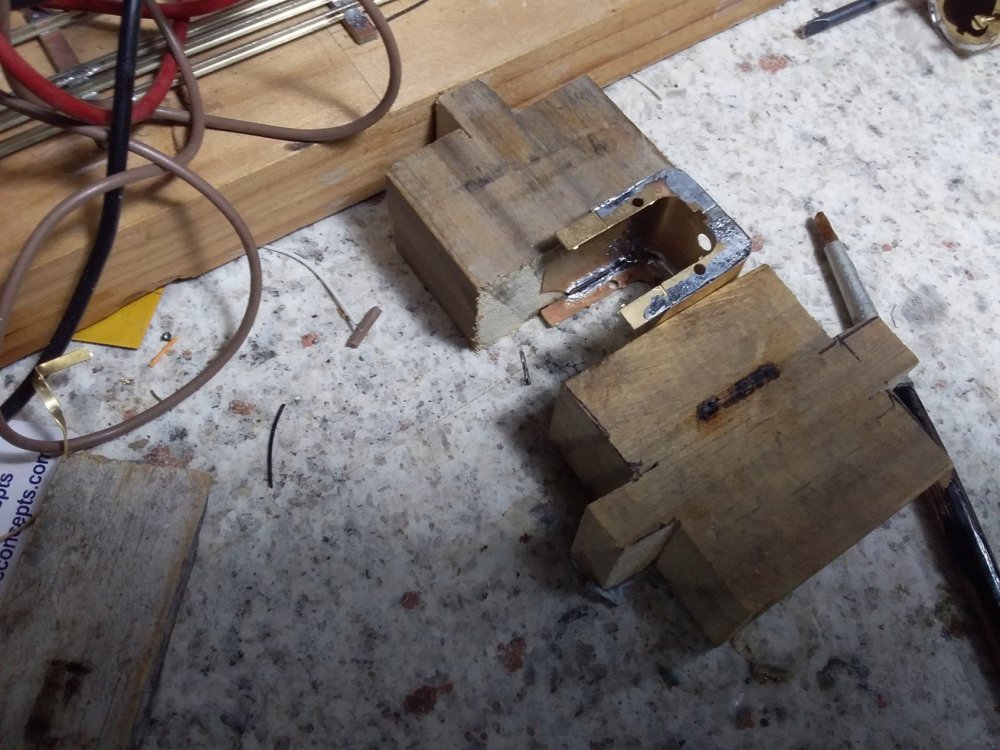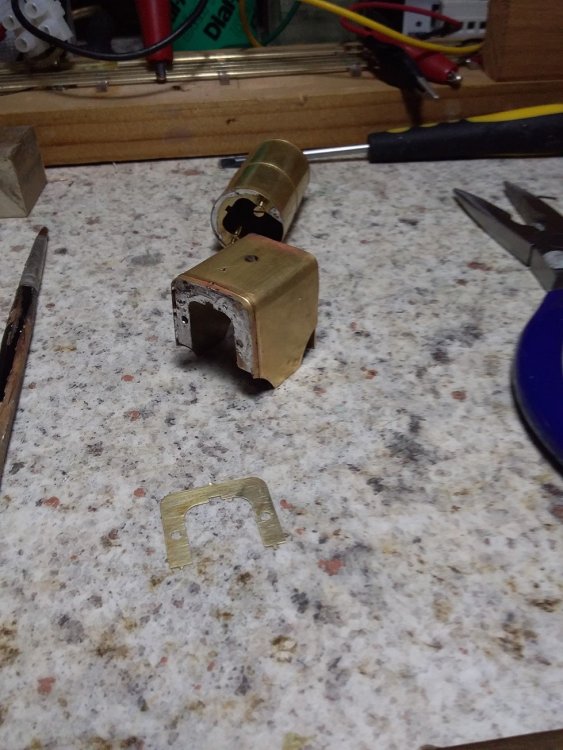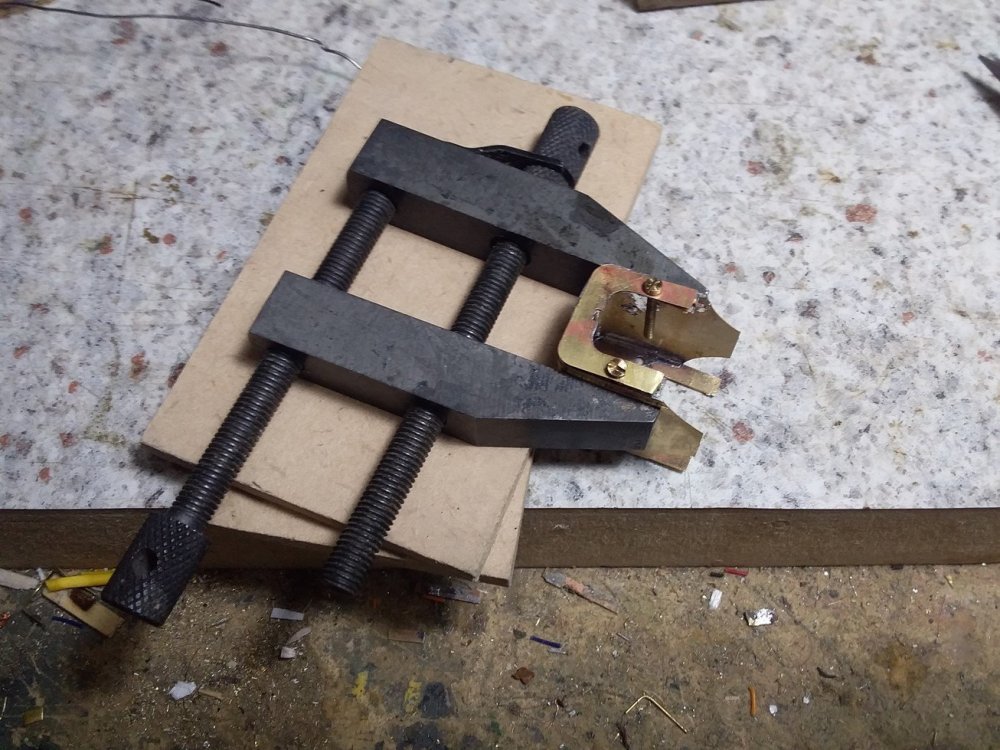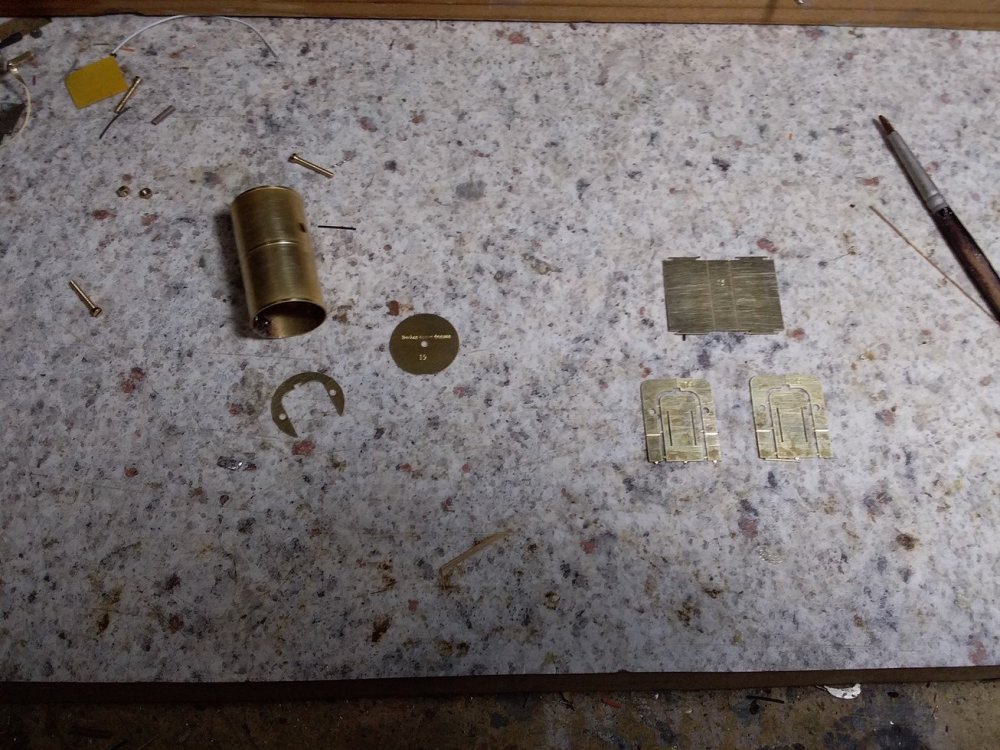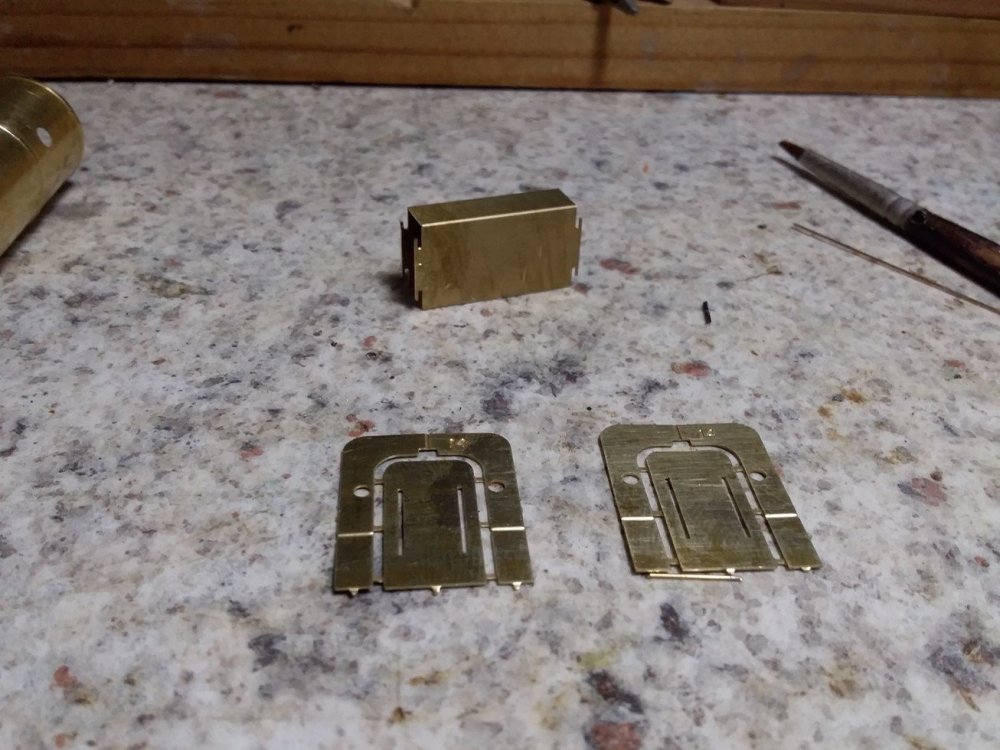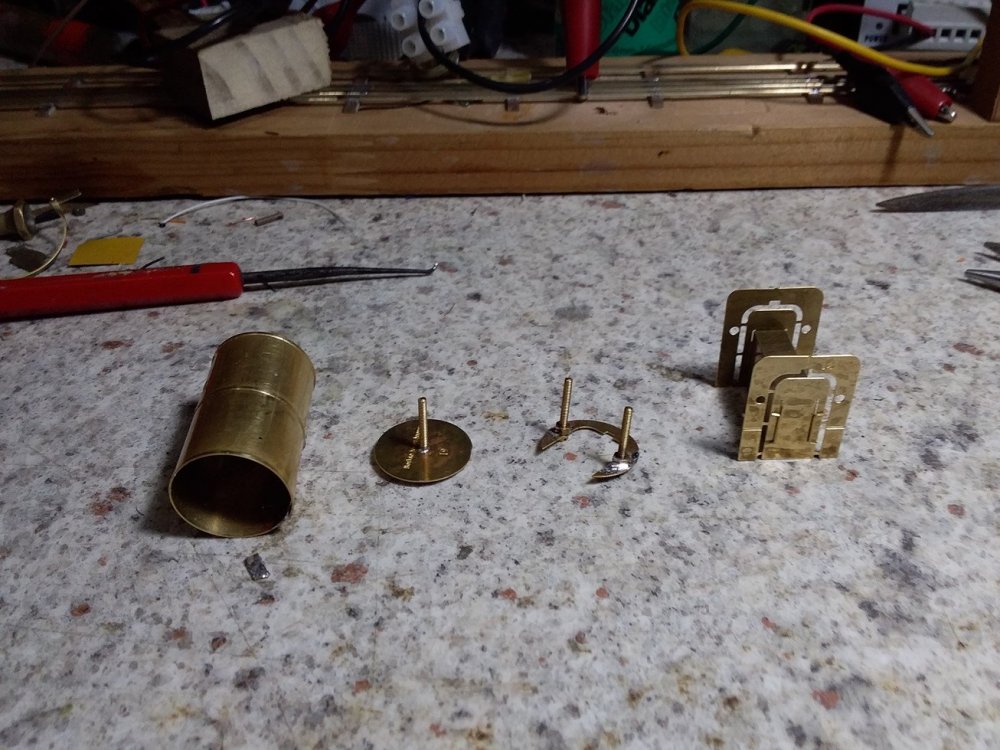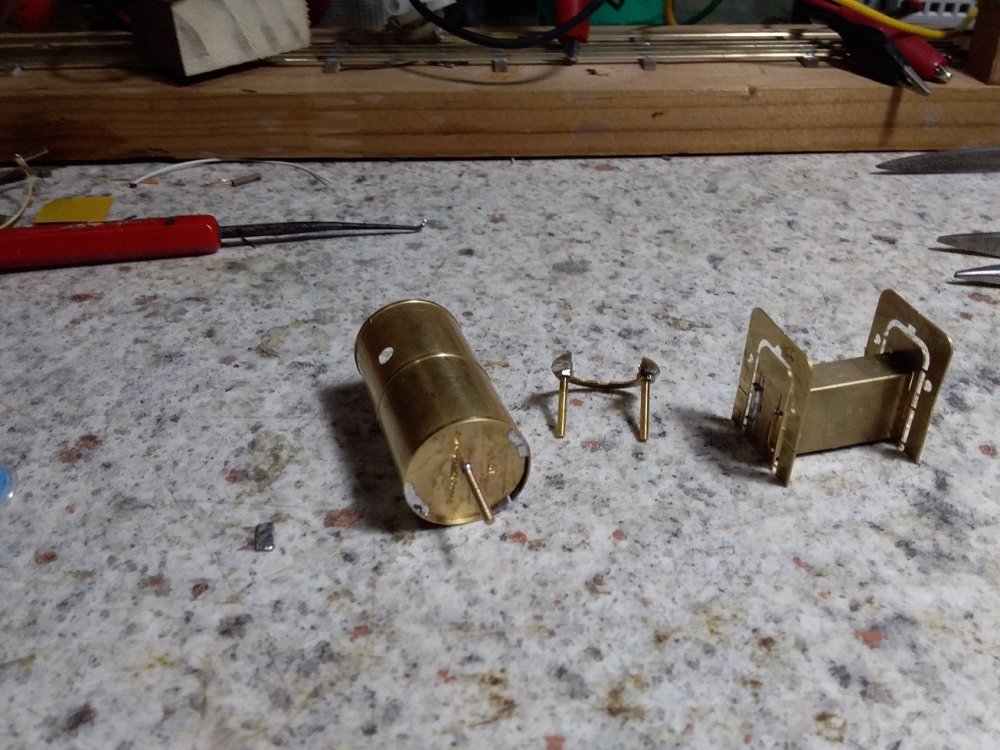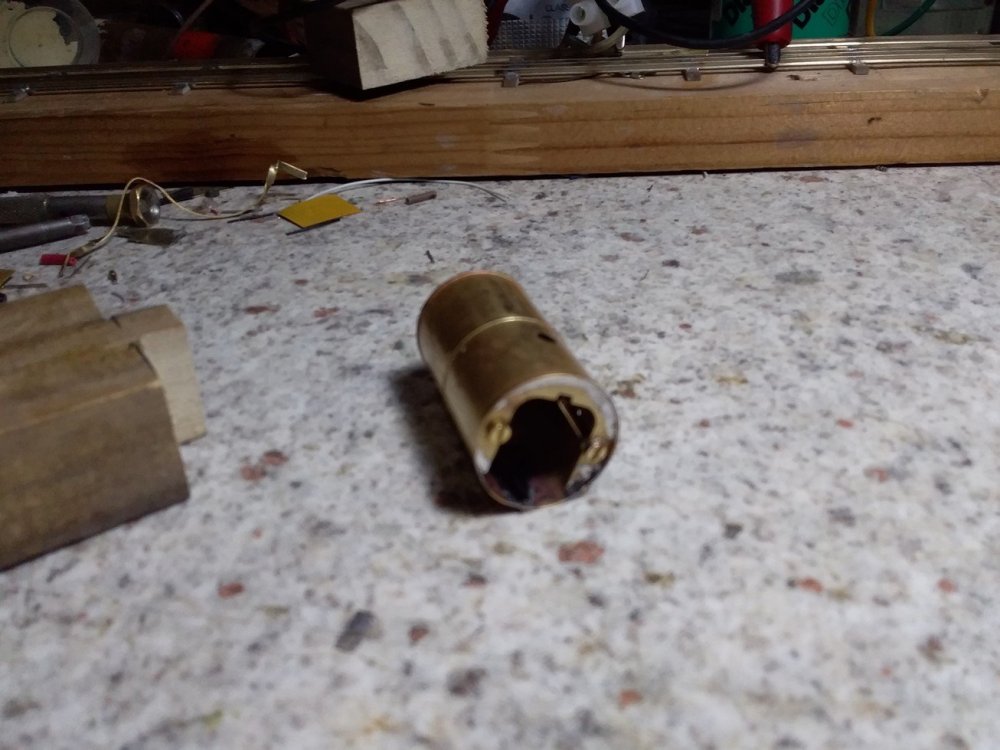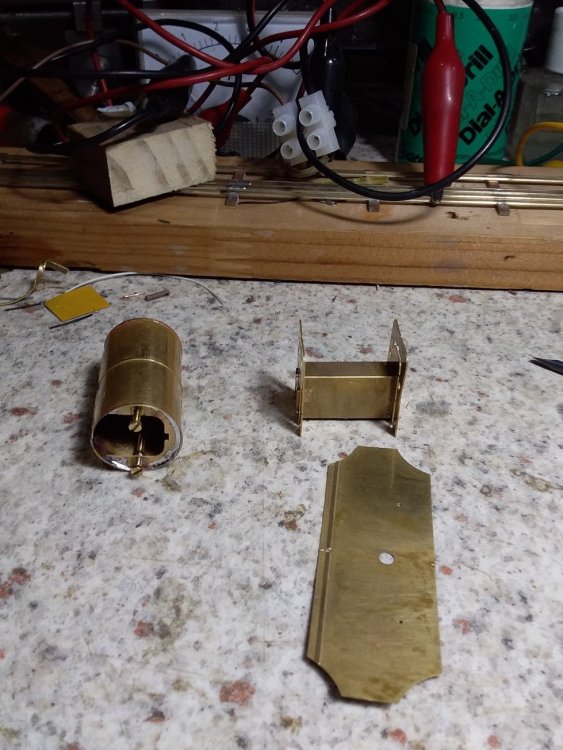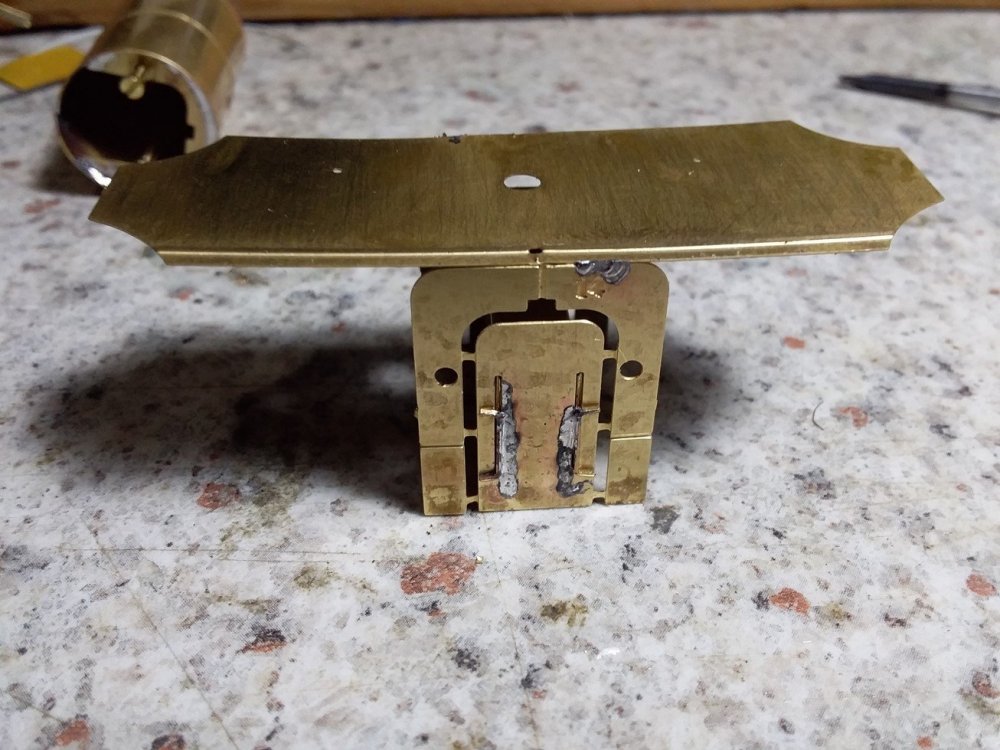-
Posts
4,855 -
Joined
-
Last visited
-
Days Won
119
Content Type
Profiles
Forums
Events
Gallery
Blogs
Store
Community Map
Everything posted by Mayner
-

Another from the Catacombs: the Guinness transport system.
Mayner replied to jhb171achill's topic in General Chat
Interesting the booklets are similar in style and format to the CIE Working Timetables. I wonder whether there was a connection? -
The Great Hibernian Central Junction looks more like a serious railway scheme than a purely speculative venture to separate gullible shareholders from their money. Clones-Limerick makes sense in terms of an extension of the Ulster Railways Belfast-Armagh-Clones main line to a port in the South West. In the 1840s Ulster Railway immediate objective was to build a line to the south west of the province rather than link up with the Dublin & Drogheda potentially taking business away from Belfast and the North East. At the time the Dublin & Drogheda and Ulster Railway built their railways to different gauges to block competitors from invading their territories. While the provisional committee had the usual list of titled gentry and prominent people, it included directors of connecting railways (in Ulster) and the Peninsular and Oriental Steam Navigation Company, potentially opening up shipping links to the Iberian Peninsula, Egypt, India, the Far East and Australia. Important for opening up export markets for Ulster's manufactured goods and raw materials in return. Line today shipping Companies Peninsular and Oriental may have been using the threat of setting up a steam ship route out of Limerick to obtain better terms from English ports rather than seriously supporting the scheme. In a way part of the route was completed with the Ulster Railway & Irish North West extending the Portadown-Clones line to Cavan and the Midland building the Inny-Junction Cavan Line.
-
The J26 was a guinea pig for the GSR paint mix, so it was all systems go in the paint shops. We recently completed a new gardenshed/workshop 3mX1.8m in order to re-locate my non-modelling tools out of the garage/railway room, but the paint new shed appears to have been converted into a paint shop! We also built a larger 4.2 X 2.4 shed for the wife's art studio to help smooth the waters especially with a new live steam loco due to arrive at some stage in 2020. Painted 650 & Ks on right, chassis dismantled for painting in center. Badger abrasive gun in improvised blasting booth on left, the ice cream container contains most of the grit while blasting the plant tray catches any overspill, I only blast outdoors using fullface respirator with P2 mask and car painters Blackdragon disposable gloves, I have had my compressor Italian made with a reservoir bought in the Book/Model Railway shop at Headington roundabout Oxford about 20 years ago and still seems to be up to the job. Slightly more close up view 650 is in GSR grey, Ks 33 Arrow in MGWR black. The loco and tender bodies break down into 6 sub assemblies, the tender top is intended to be removable for accessing DCC a DCC decoder. I will leave the paintwork to cure for about a week before re-assembling and completing locos.
- 392 replies
-
- 10
-

-
I finally got the paint shop into operation after about 2 years. The J26 was first in line as I had finished the body of the loco several years ago. I prepped the loco by sandblasting with a Badger abrasive gun, followed by scrubbing with the local equivalent of Jif scouring cream followed by a good rinse and several hours drying. Priming was with Finixa aerosol grey etch primer TSP 190. The weather has been warm and sunny so I did the paint spraying outside rather than in the workshop spray booth. The loco chassis was painted with Railmatch "Weathered Black" which had been standard for GSR/CIE grey The exact shade of GSR/CIE can be an emotive subject, but I got a sample from an A1 source, not from Grey who's coat seems to be fading in the Sun while Babushka hides in the loco shed. Linkup Paints our local automotive and industrial paint supplier colour matched a 400Ml aerosol lacquer from the paint sample with interesting results. Lacquer has the advantages of good scratch/chip resistant and a good base for applying decals.
-
While we are on the subject of cranes. 2m Athlone Breakdown Crane stored at Tuam The Athlone crane was likely to have been bought in a sale of War surplus equipment along with wagons and coach underframes after the Great War The CIE 0-6-4 cranes are ex-BR cranes re-gauged in Inchacore during the 1970s, the GSWR may have had cranes similar to the Oxford model or the GNR crane. The railway steam cranes had outriggers similar to today's mobile cranes, I think the Irish Rail steam crance have been de-commissioned hiring in mobile cranes when required.
-
I basically took a year out to renovate our home and take pictures of trains about a year after our arrival in New Zealand. One of my happy places was Helensville station the crossing and crew change point for the up and down day freights on the line linking Auckland with Northland. Helensville had lost its passenger services form Auckland during the 1960s and freight traffic was sparse with two return freight workings daily between Westfield Yard Auckland and Whangarei the Northland capital, the day freight conveyed mainly logs and forestry products, the night time freights dairy products from Northland to the Port of Auckland and northbound empty containers. Toll Holdings an Australian company had recently taken over rail operations from Tranz Rail a company formed from a consortium of Winsconsin Central and a group of Merchant Bankers and Private Equity firms. Although Tranz Rail initially appeared to initially successful both in building up rail traffic and profitable, the company ran into severe financial difficulties shortly after the original investors sold their shareholding in the company following the successful floating of the company on the New Zealand stock exchange. The company effectively propped up the share price by selling assets, including selling and leasing back locos and container wagons and deferring maintenance until the railway had reached the point of collapse and the company was in severe financial difficulties in the early 2000s. Although Toll appeared to initially appeared to grow the rail business a dispute quickly developed between Toll and the Government over track access charges with Toll threatening to withdraw freight services from much of the network including the North Auckland line. This combination of uncertainty and policy of sweating asset to maximise profits contributed to a culture of make demand among management and staff who operated and maintained the railway and a positive rainbow of locomotive liveries with few locos in matching colour schemes in multi unit consists. The photos were scanned from prints as I had mislaid the original digital files. Crew change at Helensville, the drivers (official title locomotive engineer) of the up and down day freights and a friend have a chat. The driver of 7307 on the Northbound freight has stopped his loco level with the loco of the southbound to make it easier to transfer their gear across. General Motors DFT 7307 was recently re-painted in the new Toll Rail livery following a major overhaul the majority of the 30 strong class retained different iterations of the Tranz Rail livery having received repaints when the locos were uprated to 2400Hp during the 1990s. The class which was originally introduced with a 1650hp power output for slow heavy freight work in the late 1970s have a similar 12 cylinder 645 engine to the Irish 071 class and were subsequently uprated by fitted with turbochargers with the intention of operating fast fixed formation trains of bogie wagons similar to CIEs Liner Train concept. The loco on the southbound is a 2700 hp General Electric DX dating from the mid 1970s the loco is in the Tranz Rail "Cato Blue" scheme dating from the early 1990s. Looking North the loco of the south bound train had picked up a cut of laden log wagon from the yard and coupled them to the front of her train. The platform appears to have been recently re-surfaced for a short lived experimental morning and evening commuter service. Log traffic from Helensville ceased shortly after these photos were taken. Trains on the line are controlled by Track Warrant Control a modern version of the American Telegraph and Train Order System. With this system Locomotive Engineers receive their instructions by radio by a Train Controller based in Wellington the Instructions are recorded on a specified form (or Track Warrant) which the engineer reads back to the Controller before proceeding. With driver only operation points are electrically controlled from lineside cabinets which a driver can operate without the having to leave the cab. Points on the running lines are fitted with facing point locks protected by full 2 aspect colour light signals which act as a point indicator. The same train approaching Kaipara Flats north of Helensville through typical ridge and flat country north of Auckland. The train has just crossed a dirt road with a stop sign to warn approaching road traffic, one driver told me of a hair raising story of a driver parking her car on the level crossing to drop off children to be collected by a school bus as he was approaching the crossing with a southbound train, fortunately the driver moved the car in time! A DFT on a northbound in the Tranz Rail final "Bumble Bee" scheme. Relatively few locos were painted in this scheme. The piled trestle bridge was a standard design which was extremely durable and capable of supporting quite heavy axle loads, many have since been replaced by bridges with concrete abutments an weathered steel beam and desks to minimise long term maintenance costs as opposed to an operational necessity. The North Auckland line was opened as a series of self contained portage railways and lines linking regional centers and ports with the local hinterland, although the line included one of the original railway lines in New Zealand Auckland & Whangarei were not linked by rail until 1920 with the opening of the Helensville-Whangarei section. Helensville was originally a terminus of a protage railway between harbours on the east and west coast before becoming part of a trunk route. Construction of the line was delayed by a combination of subtropical climate and poor ground conditions in Northland geotechnical techniques were eventually adapted to locate sections of the route where traditional railway construction methods had failed. The future of line has been something of a hot potato for many years with political parties taking opposing positions on whether to develop or close the line, together with regional competition between North Port and the Port of Tauranga for the relocation of Auckland Port which is strongly resisted by Auckland Port interests.
- 1 reply
-
- 5
-

-

Thursday Walkabout on the Main Trunk Line
Mayner replied to Mayner's topic in Photos & Videos of the Prototype
NZ Rail action is a good source of videos on contemporary rail operation in New Zealand produced from an enthusiasts perspective https://www.youtube.com/channel/UCXdPEyOlCE9uzs2IB_QhhqA -
Apart from systems where trains are automatically controlled on systems like the Docklands Light Railway or Airport people movers the driver is usually responsible for stopping and starting trains at stations and nothing to do with the signalling system. In the days of mechanical system the signalman usually obtained authorisation for an approaching train to enter the next station and lower the section (or starting signal(s) regardless of whether or not the train was stopping. This practice speeded up train working as a stopping train could approach a station at a higher (less restricted) speed than when the signal for the next section was at danger.
-
I would not single out the Chinese for particular criticism all nations have their national holidays when everything stops, factories have production schedules, if you loose your slot you go to the back of the queue or you pay a fee to have your work expedited which happens everywhere. In my experience British suppliers/manufacturers are no better or worse than the Chineses, I regularly experience delays and quality assurance issues with kit components supplied by British manufacturers.
-
Think it might actually be 548 or 549 one of the larger Celtic or D5 Class there is no record in the "GSR Locomotive Bible" or other sources of a D6 being rebuilt in that particular form. 542 at Inchacore she was withdrawn from service in 1959 round the same time as the remaining CIE 4-4-0s so they can't have been all that bad. The large Midland 4-4-0s were often required to work cattle trains and had smaller driving wheels that the GSWR express passenger locos and would have had to have been worked harder than the Southern engines to run at high speed which probably contributed to their reputation of sluggishness and rough running. I will probably do one at some stage once I complete the Standard Goods, the Cattle Engine, and some coaches if I live long enough!
-
Its probably heresy but the standard of modelling on the OO gauge layout appears to be more realistic and to higher standard than the Tom Tighe O Gauge railway which was more reminiscent of the 1930s tin plate era than pictures of Fry's original Irish International Railway and Tramway system.
-
It reminds me of an Austrian train driver directing us to get off at the wrong station. Our station was a request stop and my wife asked the driver to let us off at our station Willendorf in reasonable German our driver pulled up at Spitz a Donau and announced Willendorf! and did a very good Basil Fawlty impression when we refused to get off the train and pointed to the nameboard, nearly ripping the transmission out of the railcar as he took off.
-
The GSR appears to have operated a pool system for boiler repairs for the "standard" ex-GSWR & MGWR Classes to speed up repairs. Locomotives would receive the 1st available boiler following repair, boilers also appear to be swapped in an emergency if an emergency to keep a loco in service if a boiler suddenly failed in traffic. To confuse things further both the belpaire and roundtopped boilers fitted to the Midland 2-4-0s seem to have been treated as a common pool with locos that had belpaire boilers reverting to round topped following repairs with some locos apparently having up to 5-6 boiler changes during GSR/CIE ownership. The 2-4-0s were considered to be the best of the Midland locos running up higher mileage than the Standard Goods and other Small Passenger types between repairs, but not as high as the large Connemara D5&6 Class 4-4-0s which were considered to be "sluggish bad running engines" by the GSR but ran up similar mileage between repair to the Woolwich Moguls. The D5 & D6 had a reputation of being rough running though strong pullers and appear to have had a successful interlude on Dublin-Limerick via Nenagh and on the Mallow Tralee line during the 1930s not bad for 'foreign" locos. A dated photo is the beast option if you want to build a model of a particular loco at a given time.
-
The Stirling cabs fitted to the 2-4-0s and some standard goods looked at attractive but were unpopular with the enginemen complaints of head injuries and poor weather protection and appear to have been replaced reasonably quickly by the GSR. One loco superheated by the GSR in the late 20s even retained a flyaway cab!
-
I basically borrowed the idea from Brassmasters (Martin Finney's) GW loco kits using a fold up spacer rather than threaded rod to keep the profiles at the correct distance. I allowed the bare minimum for etch factor and fitting tolerance in the spacing jig and considerable care and attention is required in the assembly to avoid mis-aligning or damaging the firebox wrapper. I prepared the tutorial in order to finalise & support the instructions for assembling the kit as the fiirebox assembly is a lot more complex that for the round topped versions of the class.
-
Stage 3. Boiler barrel and outer firebox awaiting assembly. Bolting firebox and boiler together. I originally used captive bolts in the boiler backplate but revised the assembly as it was difficult to tighten the nuts without causing damage to the wrapper. Assembled boiler awaiting a loco! I form the curved fillets at the front corners of the firebox by gentle filing and smoothing using wet and dry paper. View inside firebox the notch in the back plate is to provide space for running a power feed to the motor. I slipped up by getting the hole for the handrail knob in the side of the firebox wrong. In practice it is extremely difficult to get pre-formed handrail holes in two components to line up however accurate the design or the level of care taken in the assembly. Its simpler and quicker to plug the existing hole with solder from inside the firebox and drill the holes in the firebox when the boiler and firebox are correctly lined up and assembled. This boiler is ear marked for 653 the first of the class to be rebuilt with a Belpaire boiler as first re-built 653 was something of an oddity retaining solid valences with a short GSWR cab roof and sidesheets similar to the 52 Class and older GSWR passenger locos, but that's another days/6-12 months work.
-
Stage 2 Wrapper tacked to rear plate, re-aligned at front plate and tacked in place. Wrapper soldered to front and rear plates, keeping well clear of curves! I basically applied firm hand pressure to the jig while soldering (in and out quickly!) Forming the curve on one side by lightly pressing down on the jig, the piece of wood is to stop the firebox tipping over while I was taking the picture! Firebox assembly jig 2! I basically clamp the sides of the firebox between two pieces of strip wood using hand pressure while running a light fillet of solder around the outside of the seam using 145° solder. I use a mild phosphoric flux based on a dilute commercial rust treatment similar to Ranex Rustbuster, not sure of a similar product is available in Europe, soldering was with a 25watt Antex with a medium chisel bit. Firebox formed to shape, the boiler and firebox are designed to bolt together. Spacing jig removed from firebox. Solder fillets formed all round between wrapper and front and back plates. Temporary legs removed from front plate half etched overlay to be soldered in place, front plate pre-tinned. I used a toolmakers clamps to ensure that the firebox did not disintegrate while soldering the overlay in position, the bolts are oiled and used to assist alignment during soldering.
-
I finally got round to writing the instructions for the Y Boiler 650 Class I thought it would be useful to prepare a tutorial for assembling a Belpaire firebox as I will use the same concepts for the X & Z boilers fitted to the Midland & Southern Standard goods and a number of other classes. The same principals can be applied for scratchbuilding a boiler and firebox. The boiler and fire box wrapper are half etched and easily bruised so a level of care is required in assembly. Stage 1. Pre-formed boiler wrapper, boiler front and back plates and firebox former/assembly jig. Firebox front and back formers with assembly jig bent to shape the vertical half etched line in parts 14 is to assist in aligning the firebox wrapper. Firebox jig assembled captive bolt fixed to boiler front plate, captive nuts fitted to back plate. This stage of the soldering is carried out with a medium temperature sheetmetal solder (179°) to reduce the risk of the soldered joints failing at a later stage of assembly using a lower temperature detailing/general purpose solder (145°). I oiled the threads of the backplate bolts with a light oil before soldering the nuts to the backplate, this avoids soldering everything solid. Boiler front plate tack soldered in position with 145° solder to allow adjustment before finally soldering the plate in position. The firebox former is soldered with 179° solder. Boiler back plate soldered in place with 145° solder, don't loosen the bolts until the back plate is soldered in place! Firebox wrapper there are raised alignment marks on the front and rear of the wrapper and rear of the boiler barrel. Bolts loosened on backplate. Firebox wrapper tack soldered to the front plate to check alignment, there is a slight mis-alignment I will align and tack the wrapper to the back plate before re-aligning the wrapper.
-
Aurora almost ready for a visit to the paint shop. The loco was cleaned with cream cleaner using an old tooth brush to remove tarnish and grease, a surprising amount of dirt remains in the hard to reach places and crevices and will be removed with a fibreglass brush followed by a trip to the sand blasting booth and another scrub and rinse before priming. The photos are good at showing up blemishes and defects that you don't pick up by simply looking at the model, somehow or other the guardiron on the left hand side got pushed back and will need straightening before priming. The track is EM so the loco is literally sitting on the edge of its tyres.
-
In the pre-Liner Train era Lyons Tea was distributed by rail in containers similar to the British Railways B containers https://peco-uk.com/products/lyons-tea-container On CIE usually transported this type of container in open wagons (both wooden & corrugated rather than flats, used to see these container in goods trains departing Heuston Goods or on the yard headshunt, from the top deck of the 23 bus in the late 60s early 70s, usually a single wagon marshalled immediately behind the loco Jacobs/Irish Biscuits used trucks with a swap body system for distribution following their move from Bishop Street to Tallagh and may have used ISO containers in a similar manner. The ISO container on the semitrailer is set up with reflective warning stripes for road use something you don't see on a shipping container. Before road transport de-regulation in the early 1990s many large Irish companies operated their own road transport fleet as it was the only viable alternative to using CIE due to its near monopoly position and also tended to be more efficient and cost effective. The majority of businesses outsourced their transport to hauliers and contractors following de-regulation.
-
Internationally small shunting Tractors like the Duetz tended to be used mainly at small-medium sized goods yards/industrial sidings in order to free up main line locomotives from shunting duties and speed up goods train working. Locally Kiwirail hire out tractors not unlike the G Class for shunting at private sidings, the main line locomotive usually picking up or setting out a complete train or a cut of wagons from the reception track at the customers siding. G601-3 appear to have been introduced for the experimental re-opening of certain branch lines including Banteer-Newmarket to regular goods traffic as an alternative to complete closure. Several branch lines lost their scheduled goods service during the 1947 coal crisis but remained open for cattle & beet specials but were costing nearly as much to maintain as lines with a scheduled goods service. At the time the Newmarket re-opening was successful in reviving goods traffic but failed to cover operating and (very low) track maintenance costs and no doubt rates on buildings. Castleisland and Banager were the other two branches to have their scheduled goods service re-instated, Castleisland seems to have been the most successful staying open into the late 1970s. The Clara would have been an ideal location for a small shunting tractor like a G Class with two goods yards and a number of private sidings in addition to trip workings to Banagher. Steam and later C Class diesels took over Banagher branch workings during the autumn beet campaign. The second batch G611- seem to have been intended for similar work just as branch line closures eliminated the need for small shunting trip working locos. A G611 was based at Tralee for shunting and trip working duties to Castleisland and Fenit. Use at Fenit appears to have been mainly as a shunting locomotive in connection with ship arrivals, working wagons between the Pier and Station with main line locomotives working trains from Fenit to Tralee and other destinations. The G611 rostered as Liffey Junction replaced a Midland tank loco on wagon pilot duties and also worked cattle specials on the Edenderry Branch and over the Meath Line from Liffey Junction to Drumree & occasionally Kilmessan Junction before both branches closed in 1963. A G611 worked the last revenue earning train over the Clonsilla Junction-Navan Junction Line a 17 wagon stock special to Drumree & Kilmessan in 1963, a special dispensation was given for a G Class to load to 17 wagons as nothing heavier was allowed over the line on account of the state of the track. Apparently the loco transmission overheated climbing the grade from Liffey Junction to Clonsilla and the crew waited for a time at Clonsilla for things to cool down before tackling the grades on the Meath Line. Shunting was difficult at Drumree and Kilmessan and the loco was unable to lift the cattle wagons off the loading bank at Drumree, a couple of "farm lads" helped push the train out onto the main line, before running round and running down-grade all the way to Liffey Junction. article by "Spare Link' in GSRPS journal 1980s
-
Apart from Dublin suburban passenger services the 201 regularly worked Platin-Dublin bulk Cement trains in the late 70s & 80. In additional to push-pull work 201 hauled suburban passenger working included hauling trains of conventional hauled stock Howth-Bray-Greystones & Connolly-Maynooth peak hour services in addition to Connolly-Drogheda outer suburban services. I am not sure if the 201s worked the Connolly-Wicklow-Arklow trains. Outer suburban trains during this period were generally made up of Park Royal & Laminate stock with BSGV converted from Bredin stock, rush hour trains tended to be made up of older coaches dating from the early 1950s. Before taking up Dublin suburban passenger B201 Class regularly worked main line passenger trains on the Dublin-Cork/Tralee/Limerick and Connolly- Galway/ Sligo services including 6-7 cars sets of Supertrain stock on the 13;30 Heuston-Cork and 17:30 return.
-
It looks like Keadue slumbered through another year (apart from acting as a background for broad gauge stock!) before suddenly springing to life for a brief operating session, I thought it was as well to clean the track while vacuuming the dust off the layout. Although we are currently down to two engines there were no problems apart from a buckled rail on the main line near the loco shed and two troublesome Tilling points on the lead to the fiddle yard! 3T gave a good account of herself for the cavalcade of visiting enthusiasts with a train made up of C&L, CVR & T&D coaches This scenic section has been problematical, the baseboard was too narrow to incorporate a typical C&L halt/crossing keepers house and I have been unable to resolve problems with the Tilling points leading into the fiddle yard at one end and problems with the C&L 4-4-0Ts on the sharp curve between the roadside section and the station area. It may be simpler to build a new wider scenic section with a roadside section and a halt on a sharp curve similar to Kiltubrid or Ballyduff than attempt a re-build, oh and replace those points in the fiddle yard!
-
Further progress with the assembly of the 52 Class though I might have to re-number the loco or complete in GSWR livery as I managed to assemble the loco with a different boiler to the study photograph without noticing until the loco is nearly complete I was inspired to build the loco in this condition as it looks like the crew and guest are about to set out on a fast if not record breaking run on the main line, at the time the 52 Class appear to have been working Kingsbridge - Tullow & Carlow-Kilkenny trains with fast running to Sallins or Cherryville Junction for the crews honor and to avoid delaying long distance trains. Firemans side. I assembled No 1 with a 3 ring boiler in accordance with the GSR diagram rather than the 2 ring type fitted to the loco in early GSR days. Ironically I designed the boiler to be assembled in either form. Boiler fittings are from the SSM J15, safety valve needs to be re-seated, not sure about the profile of the dome. Buffers and tender toolboxes are brass castings from 3D printed masters. The tender body is SSM GSWR 1864 Gal tender with extended coal plates which often coupled to small ex-GSWR tender locos in GSR & CIE days. Driversides. Vacuum brake pipe 0.9mm brasswire soldered under the running board, the curves in the pipework also tended to look a bit agricultural on the full size locos. I will probably end up replacing the boiler and firebox on this loco as I need to make a number of corrections to the production boiler and firebox wrappers. Assembly of the loco body is substantially complete, whistle and cab interior to be added, I need to fabricate a tender floor and coal plate and fit axleboxes and springs (after painting). Loco and tender brake gear to be assembled, the motor and gearbox is set up to confirm that the motor actually fits in the firebox and boiler! Inside Stephensons gear and compensation pivot. The gear is based on the Beyer Peacock GA for the original members of the 101 Class, available information on the 52 Class is basically limited to weight diagrams and photographs. Underside of loco chassis showing bogie pivot arrangement, I usually build 4-4-0s with a sprung or rocking leading driving axle and a rigid bogie, the slotted guide is an attempt to improve tracking and is theoretically capable of going round a 2' radius curve in OO.
-
All you ever wanted to know about container handling, but were afraid to ask http://konecranes.smartpage.fi/en/2011/portbook/files/Portbook_b_opt9.pdf Reach stackers seem to be preferred over forkilfts in recent years, possibly safer more stable machine with lower maintenance and running costs having a telescopic boom rather than a chain driven mast. There have been a number of incidents with mast type container handling forklifts tipping forward or even suddenly dropping a container if a mast chain fails. Hyster and Boss lift trucks would have been the main suppliers of forklifts to CIE during the 70s and 80s.
.png.c363cdf5c3fb7955cd92a55eb6dbbae0.png)


